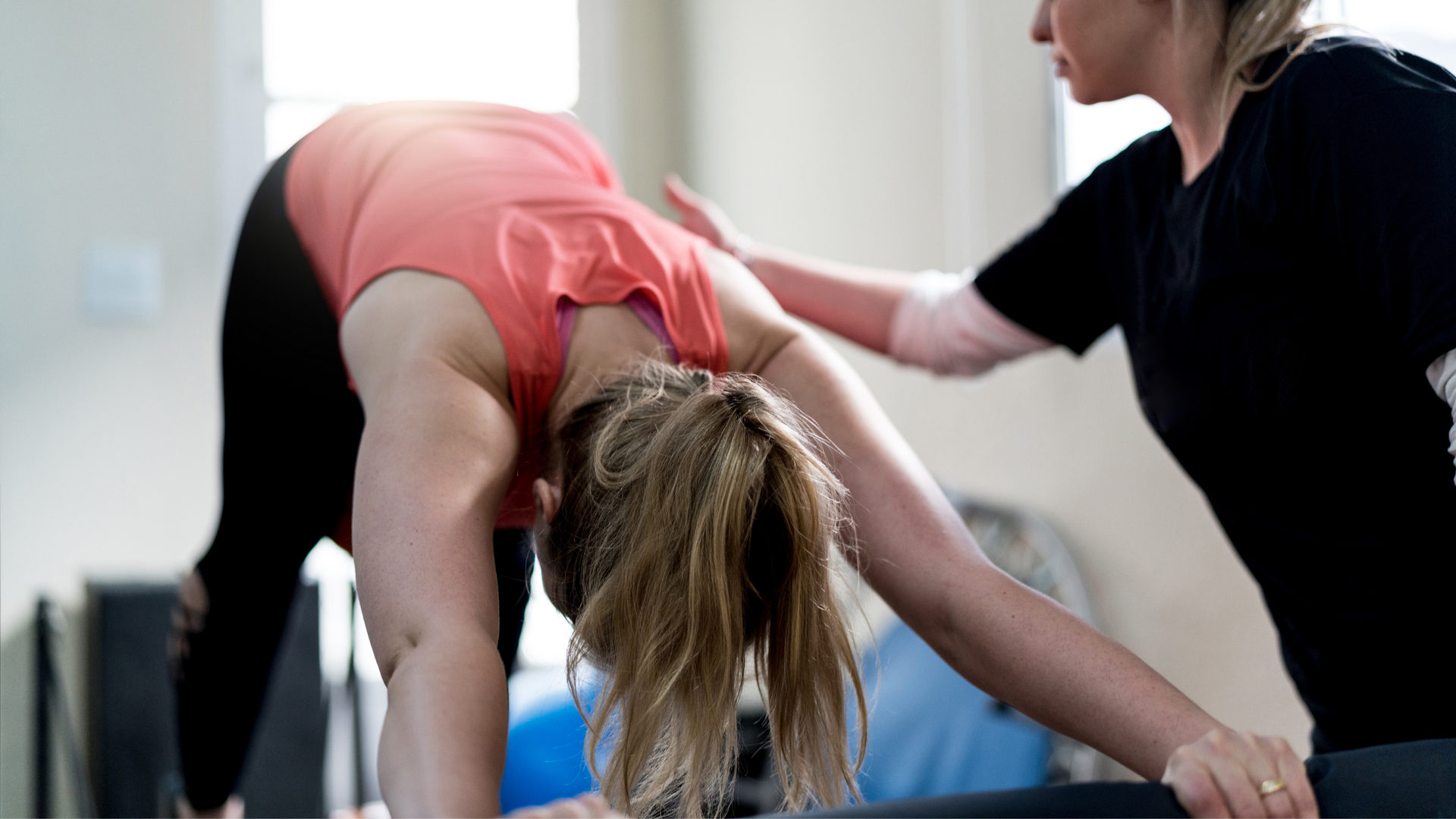Balance, mobility and exercise for Parkinson's disease
Reducing your falls risk is crucial with Parkinson's disease.

Parkinson’s disease (PD) is a complex and progressive neurological disease caused by a reduction in dopamine production, a neurotransmitter produced in the brain, and, as a result, altered nerve firing patterns. PD is characterized by both motor and non-motor symptoms and presents a significant health burden affecting over 150,000 Australians at a cost of about $10 billion annually to our healthcare system.
Parkinson’s disease is one of the most common progressive neurodegenerative
diseases in the world, second only to Alzheimer’s disease
Every year, about 1,100 people under the age of 65 are diagnosed with PD, with only 16% of those on the NDIS. With no known cure, physiotherapy plays a crucial role in maintaining balance, mobility, strength, and function for people with PD, and reducing the risk of falls and associated injuries.
The focus of this blog is on how physiotherapy can reduce complications for people who have PD. If you want to learn more about the causes and risk factors for PD, check out this article - Physiotherapy for Parkinson's disease.
Features of Parkinson’s Disease
Dopamine is an important chemical messenger in the brain that plays a critical role in many body functions. As a neurotransmitter, dopamine is involved in movement, memory, attention, behaviour, cognition, sleep, arousal, mood, and learning. Dopamine also plays a role as a ‘reward centre’, making you feel happy, motivated, alert, and focused.
A lack of dopamine in the brain can adversely affect these normal processes, impacting many regions
of the brain and nervous system and, subsequently, human function.
The reduction in dopamine producing cells manifests in both motor and non-motor symptoms including altered mood and cognition, resting tremor, muscle rigidity, slowness of movement and freezing of movement. Ultimately, PD affects many aspects of daily life, including social, work and family, and has a profound impact on the individual’s independence and mental health.
Risk factors for persons with PD
Parkinson’s disease is more prevalent in persons aged 65 years or older and so people with PD are more likely to have comorbidities (or other disease processes) present – things like diabetes, heart disease, osteoarthritis, and cancer. PD is also related to an increased risk of developing other health conditions, in particular coronary artery disease, respiratory disease, stroke, and depression.
PD impacts movement. Key features of PD include tremor, rigidity, slowness and freezing of movement. People with PD will naturally reduce their level of activity and social interactions, often resulting in further physical deconditioning, functional impairments, anxiety and depression.
The risk of falls in this cohort is high. Studies have shown that between 45% and 68% of people
with PD will fall each year, most falling recurrently.
The increase in fall rates massively increases the risk of fractures in this population. Persons with PD sustain hip fractures at a rate four times that of age-matched individuals without PD. PD patients who sustain fractures often require hospitalization which is known to exacerbate Parkinsonian symptoms, impact ability to self-care, and is a key driver of the economic burden of PD.
Finally, recent studies have shown that people with PD spend 75% of waking hours sedentary. Persons with PD are 30% less likely to be active compared to healthy individuals, with only 18% undertaking regular low level physical activity and only 6% engaging in regular moderate to vigorous physical activity.
Where to start
Undertaking regular exercise is essential to maintain longer term independence, slow symptom progression and reduce the risk of other health concerns following a diagnosis of PD. Simple lifestyle changes can make a big difference. If your lifestyle is already sedentary, undertaking small amounts of light to moderate intensity exercises such as walking, gardening, and stretching is a good start.
It is important that exercise programs are safe and effective. PD, particularly in the presence of other diseases,
requires careful planning and monitoring.
It is highly recommended to consult with a physiotherapist prior to commencing a new exercise program. A physiotherapist can record important baseline measures, prescribe therapeutic exercise that is relevant to your symptoms, monitor the program for effectiveness and modify where and when appropriate.
Balance, stretch and strengthen
We can’t cure Parkinson's disease, but with a holistic approach utilizing a multi-disciplinary team of qualified health professionals, symptoms can be managed, and independence maintained for a longer period.
Motor disturbances seen in Parkinson's disease contribute to a decline in balance, mobility, and strength,
and ultimately impact activities of daily living (ADL’s).
This puts an individual at a much higher risk of falling when compared to the typical population. Targeted exercise can address this.
Research has shown that an exercise plan that challenges balance and addresses muscle strength and flexibility improves independence, reduces the rate of falls and improves the quality of life in individuals living with Parkinsons disease. Resistance training programs are very effective for this population. According to the Parkinsons Foundation, completing resistance training 3 times per week can improve Parkinsonian symptoms, make dopamine use more effective, and potentially slow PD progression. Resistance exercise also helps maintain bone health and ward off osteoporosis thereby reducing fracture risk if a person does fall.
Stretching, both passive and active, can help to reduce rigidity of muscles and stiffness in joints. Physiotherapy can assist in measuring joint range of motion and assessing baseline muscle tightness. Soft tissue therapy, massage therapy and a regular stretching routine can then be employed to target tightness and delay joint stiffness.
For people with PD, balance issues can have a profound impact on social and emotional well-being. Reduced balance increases anxiety and fear, which in turn can impact participation in ADL’s, therapeutic exercise, and social activities. Incorporating safe and effective balance exercises into your daily routine improves confidence, movement, strength, and independence.
Exercise Options
Having an exercise routine is important and if this can be incorporated into some social time then even better. A daily walk with a family member or friend, a regular falls and balance class, and some home-based strengthening exercises are good habits to follow.
Gym programs, walking, cycling, and swimming can all be undertaken by people with PD, depending on your symptoms. Yoga and clinical pilates classes are appropriate and effective, as are falls and balance classes. Hydrotherapy is a good option in early-stage PD, especially when unable to perform land-based exercises, for example due to arthritis. The heated water can reduce pain, and provides buoyancy, hydrostatic pressure, and resistance to effectively reduce stress on the joints, assist with blood flow and strengthen muscles through movement.
The Take Home
Parkinson’s disease is a common, progressive neurological disease for which exercise plays a crucial role. Physiotherapy-directed exercise that addresses strength, balance and flexibility concerns has been shown to improve health related quality of life for people with PD. By working closely with a physiotherapist, individuals with Parkinson’s disease can delay symptom progression, improve functional capacity, mitigate falls risk, and improve their independence and self-confidence.
Do you have Parkinson's disease and want to effectively manage your symptoms? Give us a call.
At Movement for Life Physiotherapy, we understand Parkinson's disease and can safely assess your symptoms and tolerance to physical activity in a controlled environment. With a clear understanding of your functional capacity and a tailored management plan, we'll help keep you moving and doing all the things you love in life.
Give us a call now or click on BOOK AN APPOINTMENT to book online.
Sources
- Chua, S. K. K., Saffari, S. E., Lee, S. J. Y., & Tan, E. K. (2022). Association between Parkinson’s disease and coronary artery disease: A systematic review and meta-analysis. Journal of Parkinson's Disease, 12(6), 1737-1748.
- Hommel, A. L., Krijthe, J. H., Darweesh, S., & Bloem, B. R. (2022). The association of comorbidity with Parkinson's disease-related hospitalizations. Parkinsonism & related disorders, 104, 123-128.
- Kouli, A., Torsney, K. M., & Kuan, W.-L. (2018). Parkinson’s Disease: Etiology, Neuropathology, and Pathogenesis. In T. B. Stoker & J. C. Greenland (Eds.), Parkinson’s Disease: Pathogenesis and Clinical Aspects. Codon Publications. http://www.ncbi.nlm.nih.gov/books/NBK536722/
- Latif, S., Jahangeer, M., Razia, D., et al. (2021). Dopamine in Parkinson's disease. Clinica chimica acta, 522, 114-126. https://doi.org/10.1016/j.cca.2021.08.009
- Matinolli, M., Korpelainen, J. T., Korpelainen, R., Sotaniemi, K. A., Matinolli, V. M., & Myllylä, V. V. (2009). Mobility and balance in Parkinson’s disease: a population‐based study. European Journal of Neurology, 16(1), 105-111.
- Parkinson’s Disease and Strength Training: Benefits | Parkinson’s Foundation. (2016, December 7). https://www.parkinson.org/blog/tips/strength-training
- Pelicioni, P. H. S., Menant, J. C., Latt, M. D., & Lord, S. R. (2019). Falls in Parkinson’s Disease Subtypes: Risk Factors, Locations and Circumstances. International Journal of Environmental Research and Public Health, 16(12), 2216. https://doi.org/10.3390/ijerph16122216
- Richter, D., Bartig, D., Krogias, C., & Tönges, L. (2020). risk comorbidities of COVID-19 in Parkinson’s disease patients in Germany. Neurological Research and Practice, 2(1), 22.https://doi.org/10.1186/s42466-020-00069-x
More articles
Our goal is to enable you to live a pain-free life, with full mobility.
Copyright 2020 Physiotherapy





